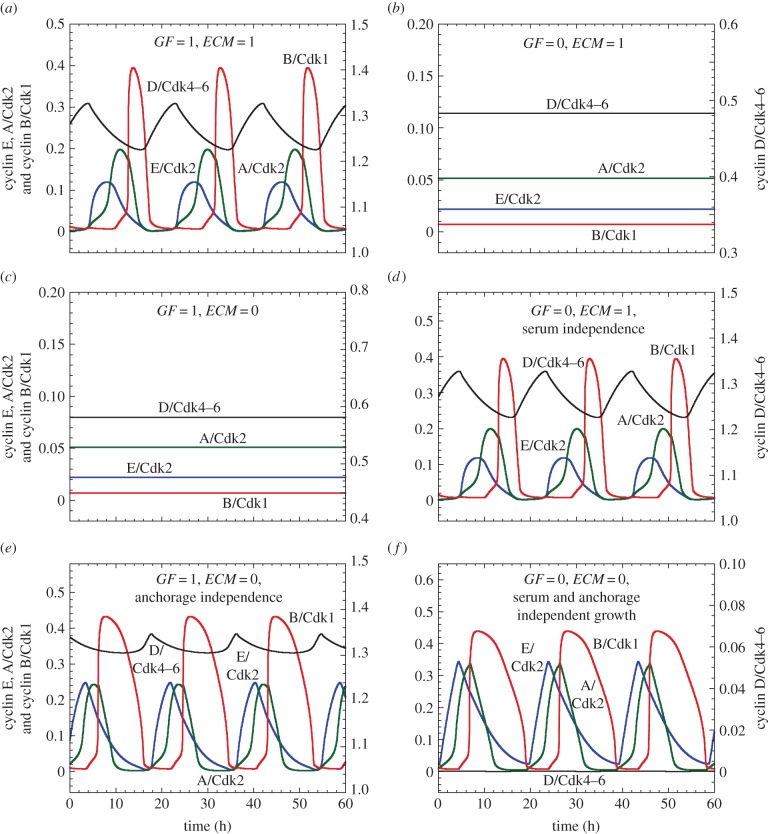Figure 4.
Regulation of the Cdk network by ECM and GF: serum- and anchorage-dependent or independent growth. The time evolution of cyclin D/Cdk4–6, cyclin E/Cdk2, cyclin A/Cdk2 and cyclin B/Cdk1 is shown in the presence (GF = 1 μM in (a,c,e)) or absence of soluble GFs (GF = 0 in (b,d,f)), and in the presence (ECM = 1 in (a,b,d)) or absence of ECM stiffness (ECM = 0 in (c,e,f)). (a) Healthy cell proliferation, characterized by the repetitive, sequential activation of the various cyclin/Cdk complexes, depending on GF and on the stiffness in ECM. From that condition, removing either GF (GF = 0 in (b)) or the stiffness in ECM (ECM = 0 in (c)) elicits cell cycle arrest. (d) Increasing the rate of activation of FAK, V1FAK, from 0.04 to 0.1 h−1 leads to cell proliferation even without GF, resulting in serum-independent cell growth. Conversely, an increase in the rate of synthesis of AP1, Vsap1, from 0.05 to 1 μM h−1 allows cell proliferation without stiffness in ECM, leading to anchorage-independent growth (e). Overexpression of the transcription factor E2F by increasing its rate of synthesis, Vse2f, from 0.15 to 0.5 μM h−1 elicits cell proliferation without GF nor stiffness in ECM (GF = 0 and ECM = 0), which situation defines serum- and anchorage-independent growth. Other parameter values are as in the electronic supplementary material, table S2. (Online version in colour.)

